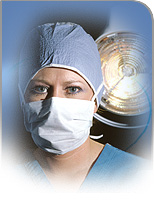|
|
| Nuclear Medicine Technologist | |
A nuclear medicine technologist uses radioactivity to help diagnose and treat diseases. The nuclear medicine technologist administers radioactive drugs (radiopharmaceuticals) to patients. The technologist will then use special cameras that detect and track gamma ray signals that are emitted by the drugs. The gamma ray signals are used to produce images of bones, tissues, organs, etc. The images are then recorded on computer or film for a physician to use in diagnosing and treating diseases. This form of imaging allows the technologist and physician to look at the functions of inner organs that are not found in typical x-rays. Thus, the images generated by a nuclear medicine technologist play a major role in preventing, detecting, and treating disease within the inner organs of the body. The majority of nuclear medicine technologists work in hospital settings. However, they also work in imaging centers, physician?s offices and clinics.
Educational Requirements and Resources
In terms of education, the nuclear medicine technologist must complete an accredited
educational program in the field of nuclear medicine. There are two main options to
choose from including an associate?s degree program (approximately two years in
length) and a bachelor?s degree program (approximately four years in length). It
is recommended that an individual attend an educational program that is accredited
by an appropriate agency such as the
Joint Review Committee on Educational Programs in Nuclear Medicine Technology.
Certificate programs (approximately one-year in length) are also offered to individuals who already have professional occupations such as radiologic technologists, registered nurses, etc, who would like to also become nuclear medicine technologists.
After the education process is complete, individuals may become registered nuclear medicine technologists by passing a national examination given by a nationally recognized organization such as the Nuclear Medicine Technology Certification Board or The American Registry of Radiologic Technologists. Employers often require this registration in order to become employed. In the state of Ohio, nuclear medicine technologists must also be licensed by the Ohio Department of Health.
For additional information on nuclear medicine technology as a career, please visit either the Society of Nuclear Medicine or the American Society of Radiologic Technologists. Please use the links provided below to learn more about specific educational programs pertaining to this field.

|
For More Information Job Line: (419) 226-7020
Fax |
| Map & Directions |